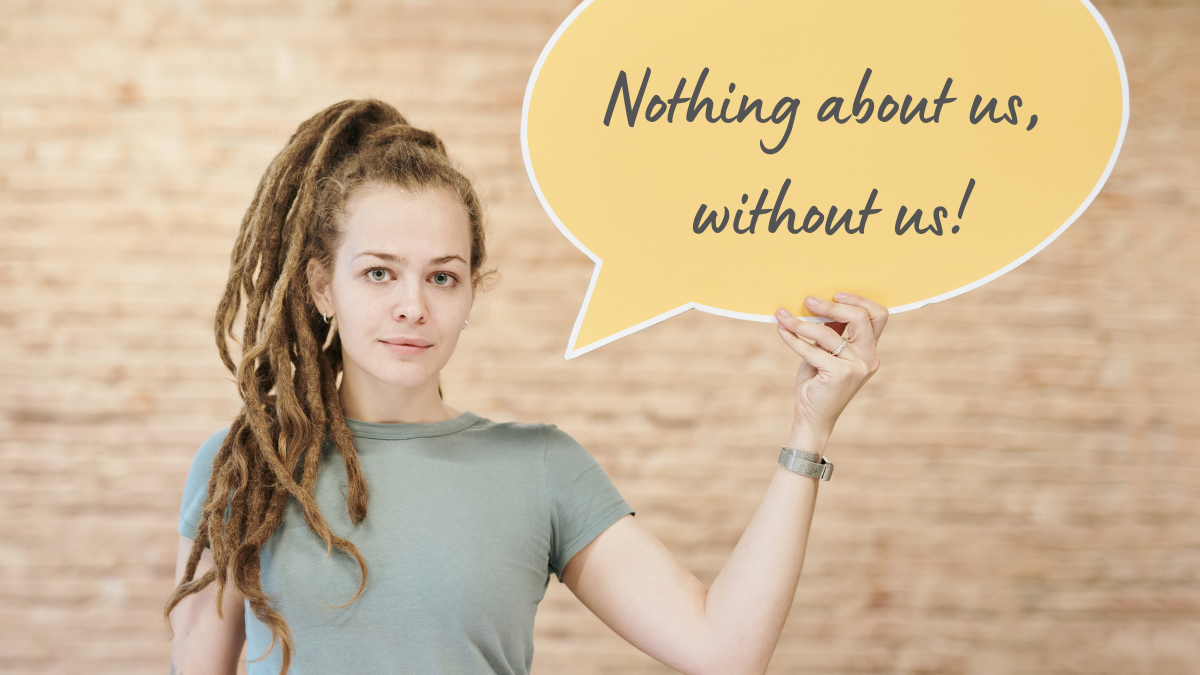
Written by Katharine Annear
Self-advocacy is about self-knowledge and finding a voice. Simple acts of choice are self-advocacy and so are bold statements of rights.
You are a self-advocate if you use communication to say you want toast instead of cereal, you are a self-advocate if you ask someone to turn the radio down in a cafe, and you are a self-advocate if you write to your local MP about an issue in your community.
The history of the Autistic self-advocacy movement spans more than 30 years since the late 1980s when early self-advocates began to write about their own experiences and challenge common myths and assumptions about being Autistic. The advent of the internet saw international links between Autistic people and the beginnings of a movement.
The first Autistic self-advocacy group in Australia began as an IRC chat and an online message board in the early 2000s. I found Geraldine Robertson and Tony Langdon and several other welcoming Autistic people online in around 2001, and we got to understanding our identities and the need for developing our own voice.
Finding our voices collectively was a difficult road because the non-autistic parent/carer voice was so strong 20 years ago (almost the only voice).
After much conflict with organised groups, we decided to go it alone. Our group, which started in 2004, affiliated with the Autistic Self Advocacy Network in the USA not long after they established in 2006. We incorporated as the Autistic Self Advocacy Network of Australia and New Zealand in 2012 and I was the inaugural Chairperson.
It is important, especially in this very fast-paced information landscape, to know that there is a history to the self-advocacy movement and that there is much to learn from the people who began the movement. The self-advocacy landscape today is complex and rich and heading where we hoped it would all those years ago.
A lot of people ask me what they need to do to become a self-advocate. If you are thinking about self-advocacy, then you’ve opened the door already.
To become a good self-advocate in these areas, you first need to get to know yourself. Ask yourself the following questions:
These are my five steps of self-advocacy:
1. Know yourself.
2. Know the issue.
3. Find support
4. Communicate the issue. (This could be a conversation, a feedback form or an official complaint.)
5. Work on solutions, including talking about who is responsible for making changes.
You may have to go through the steps a number of times to get results on bigger issues, and you may have to escalate issues – for example, going from a conversation to a formal complaint.
It’s good to get things clear in your head before having a big conversation or sending that big email. It’s also good to go over things a few times to get the emotion out so you can be calm and assertive in your interactions.
There are some situations you cannot prepare for though and you must draw on everything you have. Just recently I was in a meeting with an influential person in the disability services sector, and I had to express my ongoing discomfort with an established way of speaking that was ableist. I said my piece in a very firm manner (assertive but not so calm!) only to have a man in power yell at me. In return I said that I would not have my discomfort silenced.
In that moment I had power because I knew I had 20 years of experience behind me and not only that but a whole community of Autistic people who have found and will keep finding their voices.
Nothing about us, without us!

The Reframing Autism team would like to acknowledge the Traditional Owners of the lands on which we have the privilege to learn, work, and grow. Whilst we gather on many different parts of this Country, the RA team walk on the land of the Awabakal, Birpai, Whadjak, and Wiradjuri peoples.
We are committed to honouring the rich culture of the Aboriginal and Torres Strait Islander peoples of this Country, and the diversity and learning opportunities with which they provide us. We extend our gratitude and respect to all Aboriginal and Torres Strait Islander peoples, and to all Elders past and present, for their wisdom, their resilience, and for helping this Country to heal.